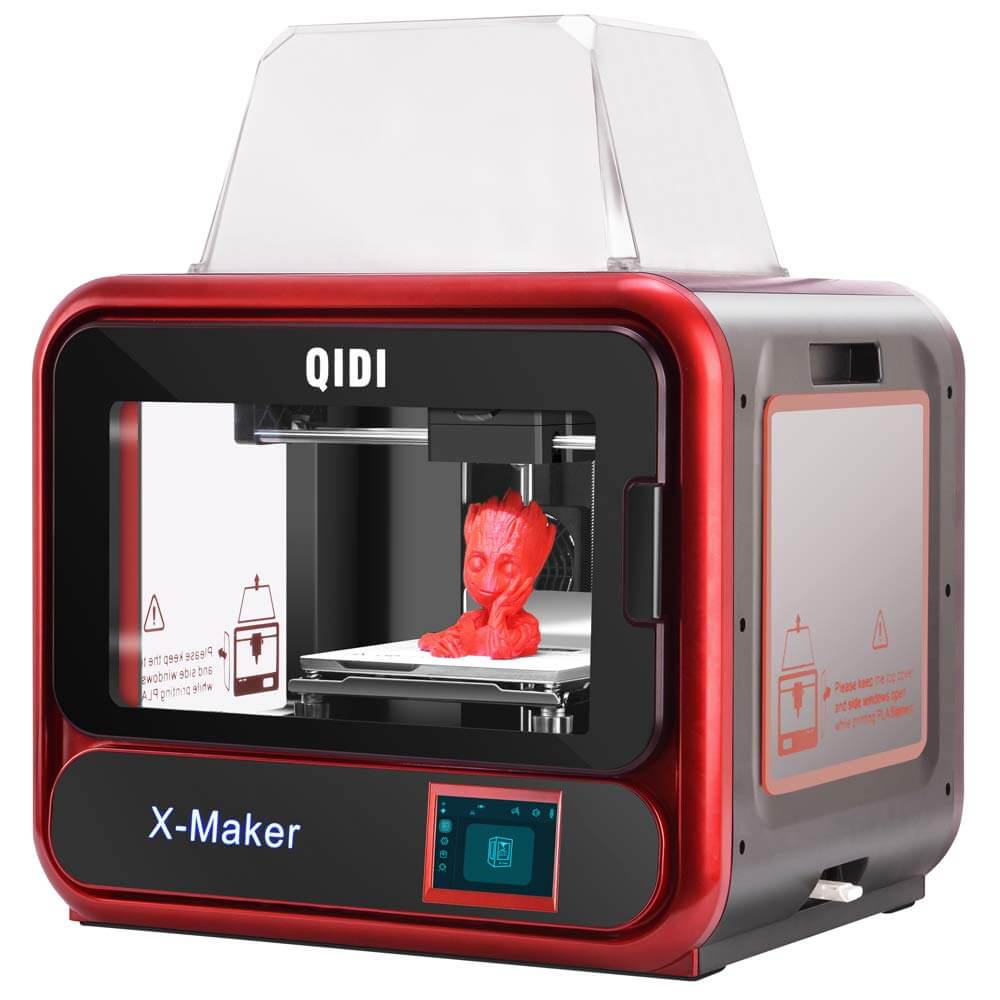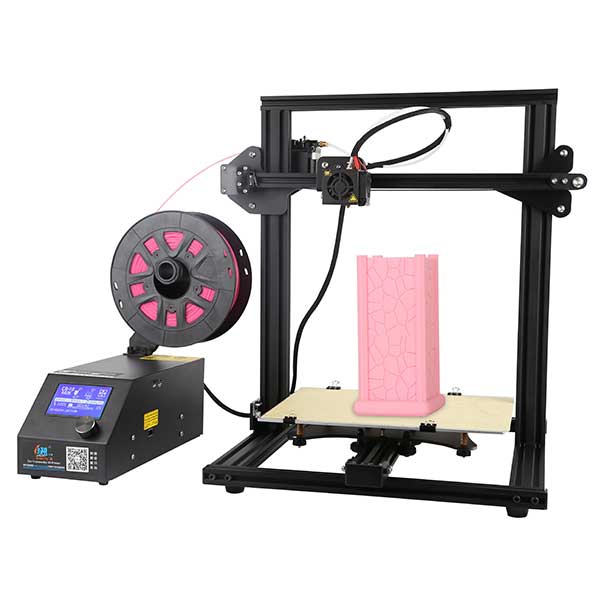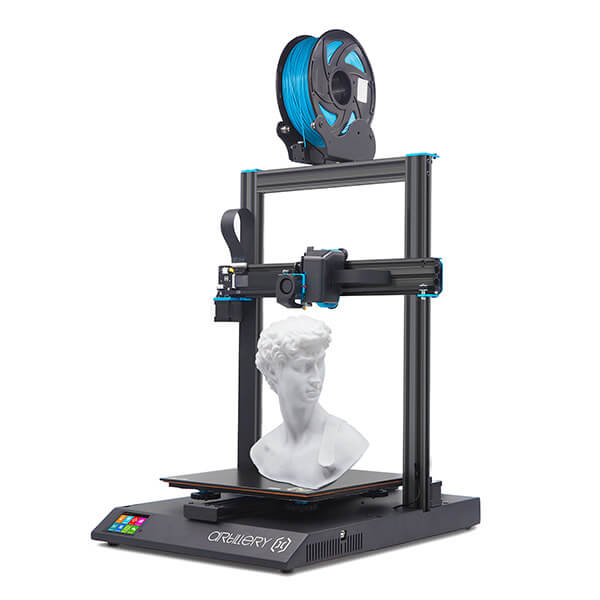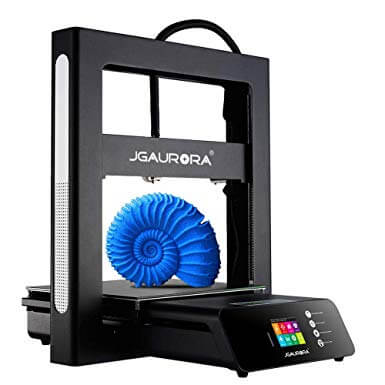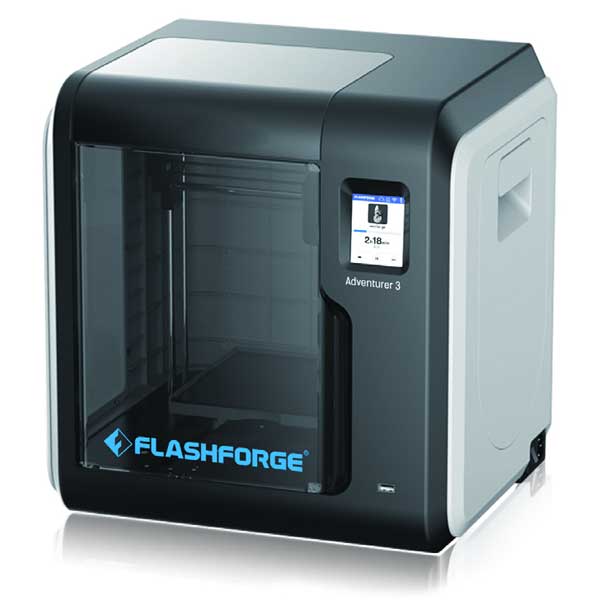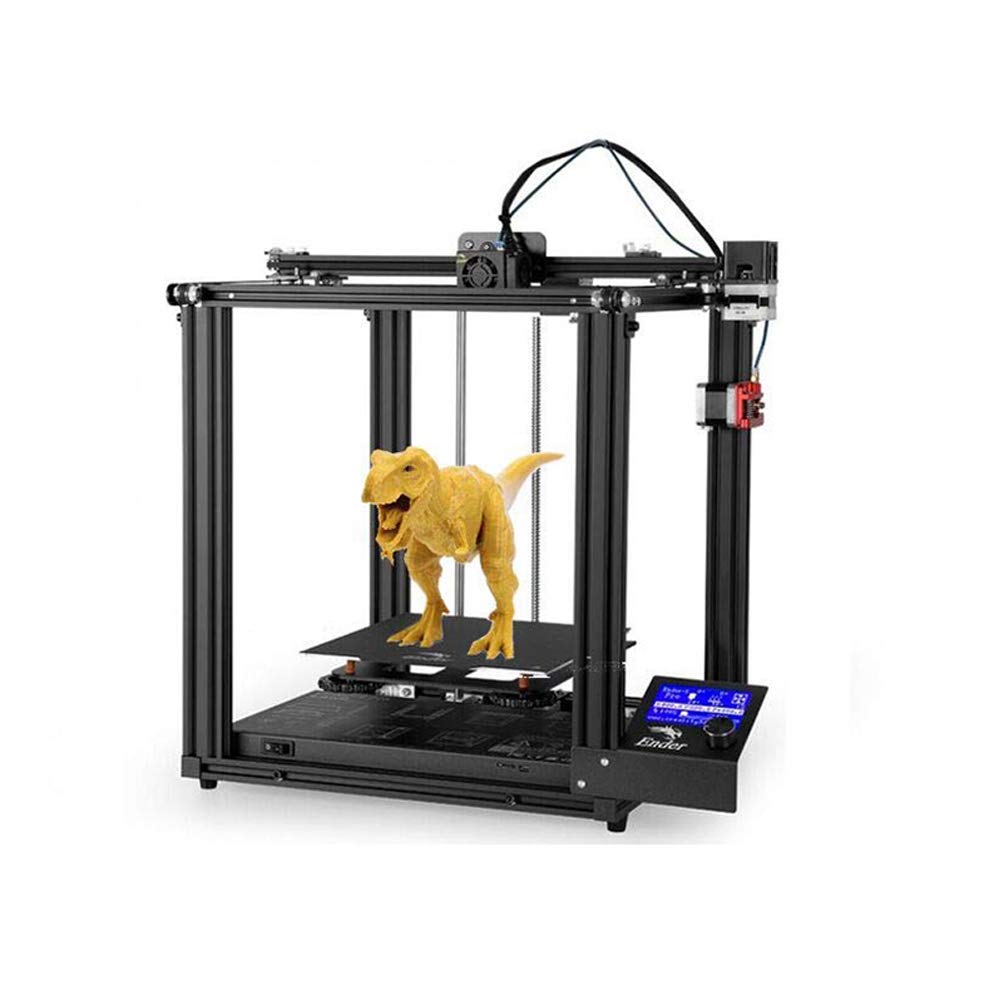Best 3D printer under $500: buying guide and selection

What’s the best 3D printer under $500?
When you’re looking for the best 3D printer under $500, it can be difficult to know where to start. The rise in the popularity of 3D printing means there are more options to choose from than ever before, which makes finding a good cheap 3D printer increasingly difficult.
Printers in this class all have a few things in common besides their price point and are typically geared towards new users looking to buy their first machine for home use. All are quite capable with PLA filament, have heated printing beds, and a similar set of tech specs as well.
Additional features and build quality are what separates the best from the rest in this class, and our guide will help you find the perfect 3D printer to suit your needs. We’ve listed some of the top-rated 3D printers using FFF/FDM (fused deposition modeling) technology.
Desktop 3D printers under $500
| Brand | Product | Build size | Country | Price
Approximate starting prices based on supplier-provided information and public data. Prices may vary by region, over time and do not include additional products or services (taxes, shipping, accessories, training, installation, …).
| |
|---|---|---|---|---|---|
| Qidi Tech
Product data validated by the manufacturer.
| X-Maker | 170 × 150 × 160 mm | – | $ 328 | Quote |
| Creality
Product data validated by the manufacturer.
| CR-10 Mini (Kit) | 300 × 220 × 300 mm | China | $ 329 | Quote |
| FlashForge
Product data validated by the manufacturer.
| Adventurer3 | 150 × 150 × 150 mm | China | $ 359 | Quote |
| Artillery 3D | Sidewinder X1 | 300 × 300 × 400 mm | – | $ 399 | Quote |
| JGAURORA | A5S | 305 × 305 × 320 mm | – | $ 399 | Quote |
| Creality
Product data validated by the manufacturer.
| Ender 5 Pro | 220 × 220 × 300 mm | China | $ 399 | Quote |
| ANYCUBIC | Mega X | 300 × 300 × 305 mm | – | $ 400 | Quote |
| Prusa Research | Original Prusa MINI+ | 180 × 180 × 180 mm | Czech Republic | $ 480 | Quote |
The products in the table are ranked by price (low to high).

| Product | Brand | Build size | Price
Approximate starting prices based on supplier-provided information and public data. Prices may vary by region, over time and do not include additional products or services (taxes, shipping, accessories, training, installation, …).
| |
|---|---|---|---|---|
| X-Maker | Qidi Tech
Product data validated by the manufacturer.
| 170 × 150 × 160 mm | $ 328 | Get a quote |
| CR-10 Mini (Kit) | Creality
Product data validated by the manufacturer.
| 300 × 220 × 300 mm | $ 329 | Get a quote |
| Adventurer3 | FlashForge
Product data validated by the manufacturer.
| 150 × 150 × 150 mm | $ 359 | Get a quote |
| Sidewinder X1 | Artillery 3D | 300 × 300 × 400 mm | $ 399 | Get a quote |
| A5S | JGAURORA | 305 × 305 × 320 mm | $ 399 | Get a quote |
| Ender 5 Pro | Creality
Product data validated by the manufacturer.
| 220 × 220 × 300 mm | $ 399 | Get a quote |
| Mega X | ANYCUBIC | 300 × 300 × 305 mm | $ 400 | Get a quote |
| Original Prusa MINI+ | Prusa Research | 180 × 180 × 180 mm | $ 480 | Get a quote |
Overview of the best budget 3D printers under $500
Below you’ll find more details about each printer.
If you want an enclosed printer in this class, the options are limited. While it does have a smaller build volume than other printers in this range at 150 x 150 x 150 mm, it has several cool features that make it an option for the best 3D printer for under $500.
First off, the Adventurer 3 is one of the few machines that is fully enclosed. Auto-leveling and an auto-feed system for the filament are two other reasons beginners will love this printer. Plus, it comes fully assembled. The flexible build plate is also removable, and the machine can pause prints when filament gets low.
Also available on: Creality Official Store
The Creality CR-10 mini is another low-cost 3D printer from Creality and an excellent choice for beginners. Despite its moniker, the build volume is impressive at 300 x 220 x 300 mm. It also comes with all the standard features you’d expect, including auto-resume, a heated bed, and a memory card slot.
This high-speed printer can handle PLA with ease and has a heated bed with a maximum temperature of 100°C. While it shares plenty of similarities with the full-size CR-10, the mini is a bit sturdier due to newer parts used in the build.
Prusa Research is one of the most popular 3D printer manufacturers in the maker community. It was founded a few years ago by the creator of the original, open-source Prusa i3 3D printer whose architecture has been widely copied. Actually, many of the printers in this article (Creality CR-10, Artillery Sidewinder, …) are based on the Prusa i3 design.
The Prusa MINI is one of the best 3D printers under $500 available on the market today. The Original Prusa i3 MK3S, which is basically a larger version of the Prusa MINI, has earned many awards throughout the years and heads several of our own 3D printer lists.
It features a magnetic print bed and removable print plates, “one-click printing” with auto bed leveling and calibration, and is able to resume prints after a power failure. In terms of quality and customer service, you can’t go wrong with an original Prusa printer.
Artillery produced an eye-catching 3D printer with the Sidewinder X1. This belt-driven system has a clean design and a synchronized Dual Z system, which increases stability. The AC heat bed can reach 80°C in 2 minutes and comes with thermal runaway protection built-in.
The Artillery Sidewinder X1 is quieter than other printers in this range thanks to ultra-quiet stepper drivers. It’s one of the best 3D printers for beginners as it’s easy to use with a small touchscreen and incredibly easy to assemble as well.
From the 32-bit mainboard to the sleek design of the machine itself, there’s a lot to like about the JGAURORA A5S. The tidy nature of this 3D printer makes it an ideal choice for younger makers, and it’s extremely easy to assemble.
One highlight of this budget 3D printer is the 2.3” touchscreen, although filament run-out detection and power failure protection are included as well. We’re also fans of the clean cable system and the Black Diamond Glass heated platform.
If you want an enclosed printer in this class, the options are limited. While it does have a smaller build volume than other printers in this range at 150 x 150 x 150 mm, it has several cool features that make in an option for the best 3D printer for under $500.
First off, the Adventurer 3 is one of the few machines that is fully enclosed. Auto-leveling and an auto-feed system for the filament are two other reasons beginners will love this printer. Plus, it comes fully assembled. The flexible build plate is also removable, and the machine can pause prints when filament gets low.
Also available on: Creality Official Store
Creality produces a wide range of affordable 3D printers, and the Creality Ender 5 is one of our favorites. This high-precision machine’s heated bed is fixed on the Z-axis, and the open metal frame design will allow you to replace or upgrade parts with ease.
The Ender 5 Pro can hit speeds of up to 180 mm/s, and the Y-axis with dual shaft is another feature not commonly found on machines in this class. You won’t get automatic bed leveling on this model, but the bed is magnetic, and it’s a solid upgrade over the popular Ender 3 overall.
The ANYCUBIC Mega X is a user-friendly 3D printer for beginners and hobbyists. It comes as an easy kit to be assembled (12 screws and 3 cables to plug in).
It comes with a huge volume, a filament sensor, a large touchscreen, and a 90°C heated bed.
How to find the best 3D printer under $500: buying guide
These are some of the things you should take into account when deciding on which 3D printer to buy.
What do you want to print?
It’s easy to become blown away by a slick-looking 3D printer or fall for cool new features that may or may not be useful down the line. Before you set your heart on a machine, the first thing you need to do is take a minute and think about what you want to create with your new 3D printer.
The level of detail you can get from a machine in this range is limited, so a budget resin 3D printer (from $199) may be a better solution if you want to print figurines or intricate works of art. Alternatively, if you just want to produce a custom case for your smartphone, prototype parts, or print a simple figure from sites like Cults3D, any FDM printer will do.
Build volume
There are a handful of specifications you’ll want to keep in mind with any 3D printer, especially budget 3D printers in this class. Build volume is the first thing you should look for, in our opinion, as this dictates how large of an item your machine can print. Even the best budget 3D printers rarely exceed 300 x 300 x 300 mm, although there are a few exceptions under $500.
You may also like:
Large 3D printer under $1000: buying guide and selection
Resolution and print speed
After build quality, you’ll want to consider the resolution and speed of the 3D printer. Resolution refers to the layer height, which is the minimum thickness of a layer produced by an FDM printer during a pass over the plate.
Printing speed is important as well, but only if you need to produce parts quickly and aren’t concerned about detail. If you print too fast, your prints can fail, so the speed is more about finding the perfect settings than searching for the fastest printer.
Extra features
One thing that’s always made consumers leery of 3D printers is the learning curve. Improvements with hardware and software over the years have made it more simple to pull off the perfect print out of the box, even with 3D printer kits under $500. While we feel all of our picks are pretty easy to use, there are a few features that will make life easier.
Print resume and filament-run out detection are fairly common in this class along with heated beds, although the quality can be hit or miss. Any good budget 3D printer will have a memory card slot and manual controls, but you won’t find many that have Wi-Fi or a color touchscreen. 3D printers with enclosures and dual extruders are also possible in this class, but rare as you’ll see from our list.
Material compatibility
There are dozens of excellent 3D printers for under $500, but they do have drawbacks compared to machines in a higher class. The biggest issue that tends to disappoint makers that are new to the world of 3D printers is a simple one, however, as it usually comes down to material support.
Most affordable 3D printers in this range can print with PLA or ABS aside from a few of the cheaper printers, but you will run into trouble with some of the more exotic composites. To print successfully with Carbon Fiber or other composite materials, the print head and build plate need to reach certain temperatures and may require a special extruder or nozzle, which leads us to our next section.
Upgradability
One of the great things about 3D printers is the fact you can upgrade most of them in some way. Whether it’s through official parts and kits or third-party accessories, new users are often amazed at what an extra hundred dollars can do to a low-cost desktop 3D printer.
Unfortunately, not all printers in this price range are upgradable, so pay close attention to the frame, how the machine is built, and if the manufacturer has parts or upgrade kits available. You can build or buy an enclosure to keep your prints warm or swap extruders, but the frame or overall build quality can put a serious damper on any upgrade plans.
Community Support
Solid customer support is always a good thing to have, whether you’re buying a 3D printer under $500 or considering a large professional 3D printer. Support is an area where the results are mixed with budget-friendly 3D printers as you’ll find some manufacturers won’t even have an official website.
3D printers with excellent “official” support from the manufacturer always have an edge but don’t overlook community support. There are subreddits, sites, and forums dedicated to brand and particular machines as well. In our opinion, community and customer support go hand in hand.
FAQ
Yes, but some are capable of working with other plastic filaments like ABS as well. Heated beds need to reach 100°C to get good adhesion with ABS (and avoid warping), and the hot end needs to hit 210°C for materials like TPU.
With more expensive systems, you can end up tethered to a company’s software. That isn’t the case with cheap 3D printers, however, as most will work with open-source software like Cura.
 English
English  Français
Français

